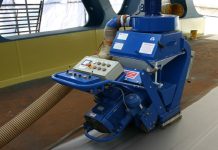CNC machining is the most advanced manufacturing technique. These machines are reputable due to their accuracy, automobility, and ability to provide higher tolerance in the components. However, a successful CNC machining project not only depends on picking the CNC machine only. It significantly depends upon choosing the suitable material as well.
CNC machines are compatible with various materials. However, the most common ones include aluminum and stainless steel. Initially, steel was used in many industrial applications; however, industrialists shifted to stainless steel because it is more rust-resistant. On the other hand, aluminum is lightweight and pliable.
Picking a better material for CNC machining is critical as it significantly impacts the manufacturing costs and outlines the service life of the final product.
Heterogeneity of Aluminum and Stainless Steel
Although both materials may look similar to an everyday user, they are widely different in many aspects. A quick comparison is illustrated below.
Composition
Like all other sectors using computers, CNC machines also produce radically different results with minute changes in the material. A substance’s chemical composition dictates its material strength, surface finish, malleability, corrosion resistance, and costs.
Aluminum consists of magnesium, manganese, silicon, and zinc. In comparison, stainless steel is an iron alloy that contains 10% of chromium, and around 1% of the entire composition contains zinc, aluminum, titanium, and zirconium.
Melting Point
The melting point refers to the temperature when the object changes its state (converting from solid to liquid). Noting the melting point of the chosen material is vital to ensure that it delivers the required strength.
Stainless steel has a melting point of about 1200 to 1500 degrees Celsius. In comparison, aluminum has a melting point of 600 or so. So aluminum is ideal if you want something sturdy for extrusion or die casting. However, stainless steel works more ideally if you want more heat resistance than elasticity.
Yield Strength
The yield strengths of both materials are significantly different. Therefore, it is crucial to scrutinize the project’s requirements before opting for a material. The average yield strength of aluminum is 7 to 11 MPa, while that of stainless steel is 25 to 2500Mpa. Hence, if you are looking for material strength, stainless steel is the ideal choice.
Electrical Conductivity
Electrical conductivity is one of the primary distinctions between the two metals. Aluminum contains copper concentrations which increase its electrical conductivity up to 61%. In contrast, stainless steel has an electrical conductivity of 3.5%. Hence it makes a poor conductor of electricity than aluminum.
Heat Conductivity
Thermal conductivity is an essential consideration when manufacturing heat sinks. Aluminum offers good thermal conductivity but has a low melting point so it can deform at excessively higher temperatures. In comparison, stainless steel has a higher boiling point and is more suitable for component construction requiring exposure to higher temperatures.
Rust Resistance
Both aluminum and stainless steel are rust-resistant. However, both differ in the underlying principles. Stainless steel comprises nickel and chromium compounds, producing a protective layer on the material’s surface.
In comparison, aluminum’s structural composition produces an oxide layer on the external surface which resists corrosion and rust.
The Bottom Line
Aluminum and stainless steel differ in a variety of aspects. The most noticeable difference is the surface. Pure aluminum exhibits a matte whitish surface, while stainless steel has a shiny grey exterior. Next, their chemical composition, machinability, costs, resistances, and conductivities differ. Since CNC machining is critical, avoiding minute details can adversely affect the final product.
Stainless steel works best when you need higher material strength and heat resistance. In contrast, aluminum is preferred for its lightness and non-corrosive nature. Moreover, aluminum’s malleability makes it easier to machine than stainless steel.













